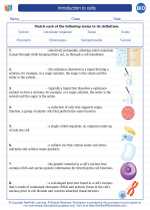Endoplasmic Reticulum
The endoplasmic reticulum (ER) is a vital organelle found in eukaryotic cells, where it plays a key role in the synthesis, folding, modification, and transport of proteins and lipids. There are two main types of endoplasmic reticulum - rough endoplasmic reticulum (RER) and smooth endoplasmic reticulum (SER).
Rough Endoplasmic Reticulum (RER)
The RER is studded with ribosomes on its surface, which gives it a "rough" appearance when viewed under a microscope. These ribosomes are involved in the synthesis of proteins that are either secreted from the cell or inserted into the cell membrane. The newly synthesized proteins are threaded into the lumen of the RER, where they undergo folding and may undergo additional modifications such as glycosylation.
Smooth Endoplasmic Reticulum (SER)
The SER lacks ribosomes on its surface and is involved in lipid synthesis, carbohydrate metabolism, detoxification of drugs and poisons, and calcium storage. It plays a crucial role in the synthesis of lipids like phospholipids and steroids, and also helps in the detoxification of harmful substances by using enzymes.
Functions of Endoplasmic Reticulum
- Synthesis of proteins and lipids
- Modification and folding of proteins
- Detoxification of drugs and poisons
- Storage and release of calcium ions
- Carbohydrate metabolism
Study Guide
To understand the endoplasmic reticulum thoroughly, it is crucial to focus on the following key points:
- Structure and composition of the endoplasmic reticulum
- Differences between rough and smooth endoplasmic reticulum
- The role of ribosomes in protein synthesis on the rough endoplasmic reticulum
- The functions of the smooth endoplasmic reticulum
- The importance of the endoplasmic reticulum in the overall functioning of the cell
Understanding the endoplasmic reticulum will provide a solid foundation for comprehending the overall process of protein and lipid synthesis, as well as the regulation of cellular metabolism and detoxification processes.
.◂Biology Worksheets and Study Guides High School. Introduction to cells
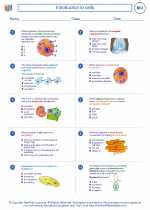
 Worksheet/Answer key
Worksheet/Answer key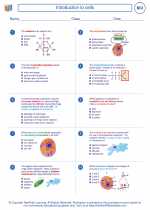
 Worksheet/Answer key
Worksheet/Answer key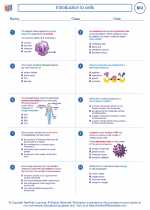
 Vocabulary/Answer key
Vocabulary/Answer key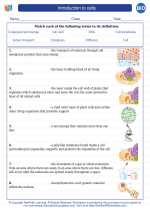
 Vocabulary/Answer key
Vocabulary/Answer key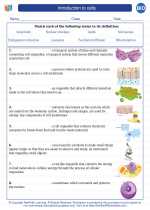
 Vocabulary/Answer key
Vocabulary/Answer key
 Vocabulary/Answer key
Vocabulary/Answer key